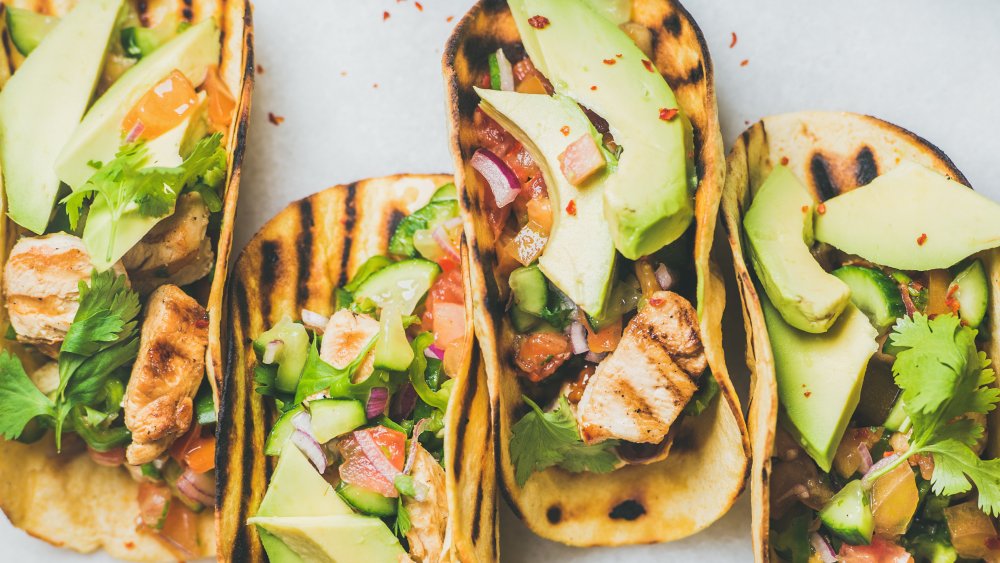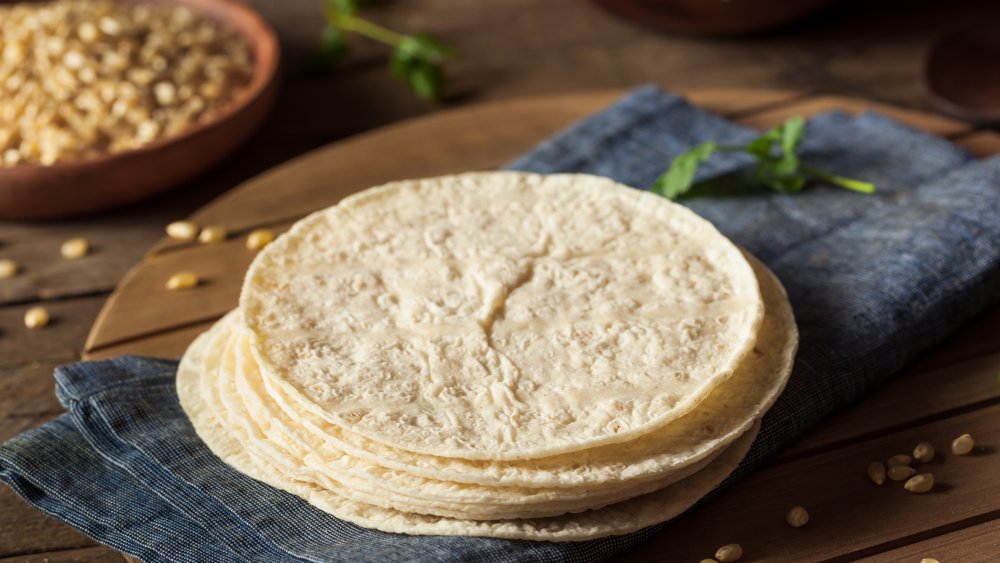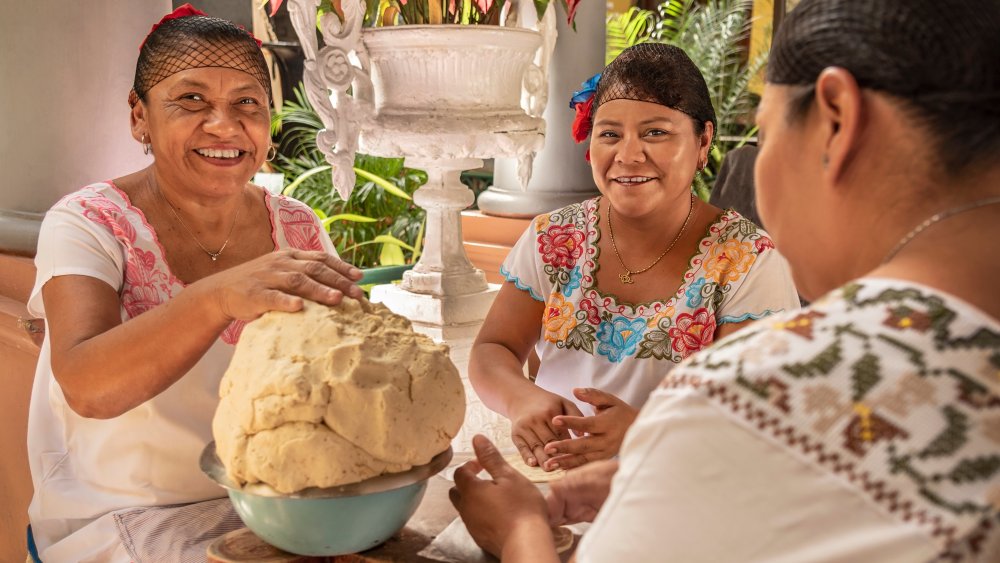The Truth About Corn Tortillas
Americans love Mexican food, according to ABC News. In the United States, there are more Mexican restaurants than there are Italian restaurants, Chinese restaurants, and seafood shacks. The United States is reported to have about 55,755 establishments, totaling in a market size of about $55 billion (via IBIS World).
So, it's no surprise that diners love tacos. The Tortilla Industry Association states that not only do Americans love tortillas, but they're the most popular of all the ethnic breads (i.e. English muffins, bagels, pita bread). It is estimated that the US consumed about 85 billion tortillas — and that's not counting tortilla chips — in the year 2000. Tortillas are a versatile bread, allowing for diners to fully customize them. Try Cake explains how tortillas allow for a hearty array of different fillings. From meat-focused tacos to veggie-focused tacos, people can literally make it their own. Tortillas have become so mainstream that they've gone on to substitute for bread in hot dogs, pizza, and sandwiches.
Corn tortillas have a long history
Britannica states that tortillas are considered a round, thin flatbread that originates from the vibrant country of Mexico. Chapala Mexican Restaurant explains that the humble tortilla is believed to have been developed around 10,000 BCE, something that falls in line with the domestication of corn in that area. Maize (also known as corn) was considered one of the most important crops of the time for the ancient Mesoamerican cultures residing in Mexico during the precolonial era.
Science Direct refers to Mesoamerica, where the Aztecs and Mayans resided, as the "cradle of corn." The report explains how the cultivation of corn (along with other nixtamalized foods) was a big factor that helped these indigenous cultures turn into progressive farmers that would lay the foundation for how corn products (like the tortilla) would be produced and made today. It wasn't until 1492 that wheat was introduced to the indigenous people through the arrival of Christopher Columbus. Subsequently, it was the subjugation of the Aztecs in 1521 by the Spanish conquistador Hernan Cortes that forced flour tortillas to become the norm.
The ancient tradition of making corn tortillas
According to Kitchn, all one would need to make fresh corn tortillas at home is masa harina and water. Masa harina may look like cornmeal, but it is far from it. Masa harina is made from ground corn kernels that have been soaked in limewater. Why is this process so important to the art of making an authentic tortilla? This nixtamalizes the corn, according to Science Direct, which increases the nutritional value of the corn by adding calcium, something the diets of the indigenous tribes otherwise lacked. Through this process, the indigenous tribes were able to achieve the soft dough they called masa, which is the base ingredient needed to make tortillas.
Kitchn explains that in order to make deliciously pliable tortillas, you need the masa harina, as regular cornmeal will leave your tortillas brittle (meaning that you can't fold them). Science Direct reports that today's modern nixtamalized food products follow the same process that was implemented all those years ago (albeit on a more industrialized scale).


